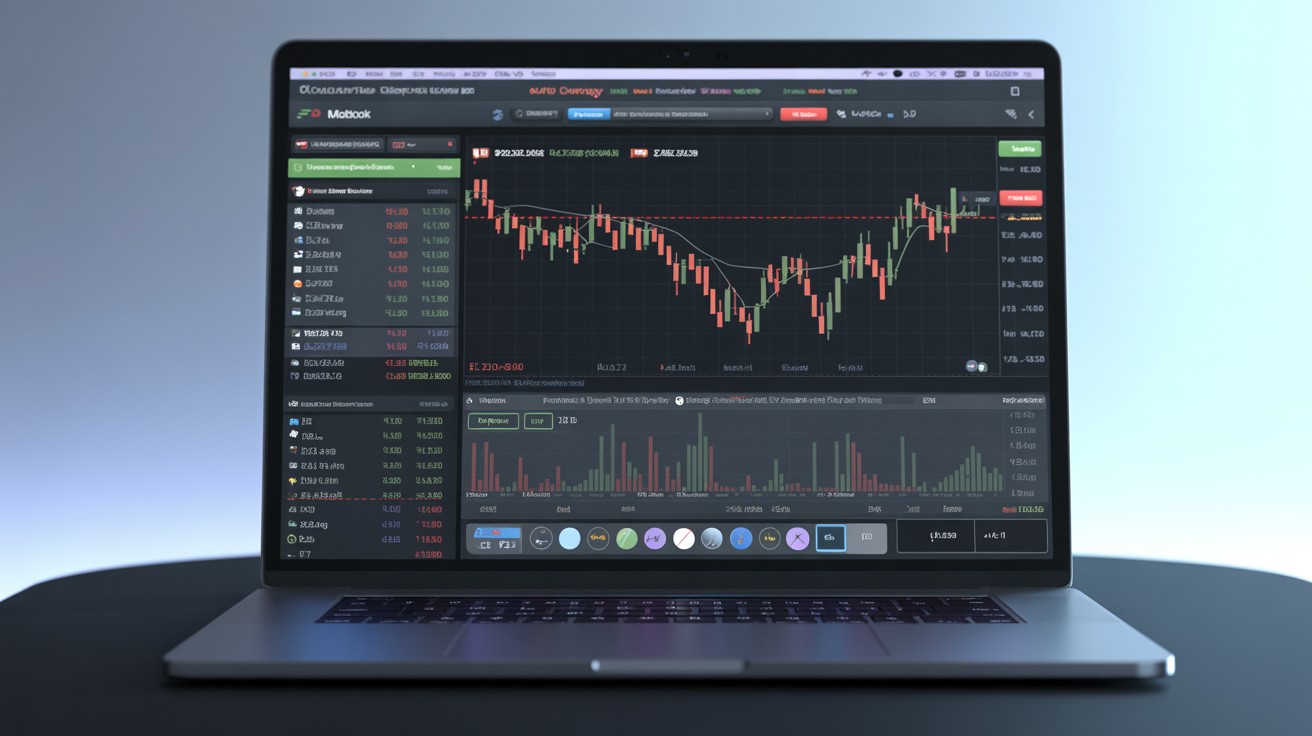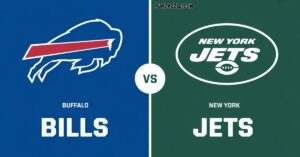Mac users have long faced a frustrating reality in the Forex trading world: most powerful trading platforms were built exclusively for Windows.
MetaTrader 4 remains the industry standard, yet MetaQuotes never released a truly native Mac version.
This leaves thousands of traders scrambling for workarounds that often compromise performance or functionality.
But here’s the truth you absolutely can run MT4 for MacOS with complete trading functionality and robust market analytics.
This guide cuts through the noise and shows you exactly how to set up a professional-grade trading environment on your Apple device, whether you’re executing market orders, running Expert Advisors, or conducting deep technical analysis.
Why Mac Traders Face Unique Challenges
The MetaTrader 4 platform was engineered for Windows from day one. MetaQuotes built MT4 using Windows-specific programming libraries, which means the software simply won’t run natively on macOS without some form of translation or virtualization layer.
This creates real problems for professional traders who prefer Mac hardware. You can’t just download MT4 and start trading.
The platform requires either running Windows within macOS, using compatibility layers, or connecting to remote Windows servers. Each approach has distinct trade-offs in performance, cost, and complexity.
Trading on Mac isn’t impossible it just demands the right technical setup and understanding of which method matches your trading strategies.
Five Legitimate Methods to Run MT4 on Your Mac
Wine-Based Solutions: CrossOver and PlayOnMac
Wine creates a translation layer that converts Windows system calls into macOS-compatible commands in real time. CrossOver is the commercial, polished version; PlayOnMac offers free but less stable performance.
Performance characteristics:
- Execution speed: 15-20% slower than native Windows
- Resource usage: Minimal CPU overhead (5-8%)
- RAM requirements: 2-3GB during active trading
- EA compatibility: 60-70% of scripts work without modification
This approach works brilliantly for manual traders focused on chart patterns, candlestick charts, and technical indicators like moving averages or Bollinger Bands. You’ll access full charting tools and execute stop-loss orders without hiccups.
The limitation? Complex automated trading systems with heavy algorithmic trading logic often fail. If you’re running sophisticated backtesting strategies or multi-indicator custom scripts, Wine solutions disappoint.
Best for: Swing traders, position traders, and anyone prioritizing real-time market quotes over automation.
Virtual Machines: Parallels Desktop and VMware Fusion
Running Windows 10 or 11 inside a virtual machine gives you complete MT4 platform functionality. Parallels Desktop leads the pack with seamless Mac integration and optimized performance for financial markets applications.
System requirements for smooth operation:
| Component | Minimum | Recommended |
|---|---|---|
| RAM | 8GB | 16GB+ |
| Storage | 50GB free | 100GB SSD |
| Processor | Intel i5/M1 | Intel i7/M1 Pro+ |
| Graphics | Integrated | Dedicated GPU |
Installation takes 30-45 minutes. You’ll allocate 4-6GB RAM to the Windows VM, install MT4 from your broker, and configure network settings for stable live price quotes.
Order execution speed matches Windows performance within 2-3 milliseconds imperceptible during normal CFD trading or currency pairs transactions.
Your Expert Advisors run flawlessly, strategy optimization completes without errors, and multi-timeframe analysis happens smoothly across dozens of charts.
The downside? You’re running two operating systems simultaneously. Battery life drops 40-50% during active trading sessions. Fan noise increases. And you’ll need to purchase both Parallels ($99 annually) and a Windows license ($139 one-time).
Best for: Serious traders running automated trading strategies, EA backtesting, and complex portfolio management systems.
Boot Camp: Maximum Performance Through Dual-Booting
Boot Camp partitions your Mac’s drive and installs Windows directly on the hardware. When you restart, you choose whether to boot into macOS or Windows. This delivers 100% native Windows performance no virtualization overhead whatsoever.
Trading performance metrics:
- Real-time execution speed: Identical to Windows PC
- CPU availability: Full processor access
- Platform stability: Highest reliability
- Market volatility response: Instant tick processing
The catch? You can’t run macOS and Windows simultaneously. Need to check email in Safari while monitoring Fibonacci retracement levels? You’ll restart into macOS, losing your Windows trading session entirely.
Boot Camp suits traders who dedicate specific time blocks to trading. If you’re running scalping strategies that demand split-second trade execution during the London or New York sessions, then checking social media afterward, this works perfectly.
Best for: Day traders, scalping specialists, and anyone prioritizing raw speed over convenience.
Cloud VPS: Trading From Anywhere
A Virtual Private Server runs Windows in a data center. You connect via remote desktop from your Mac, accessing a full Windows environment through your browser or RDP client.
Popular Forex VPS providers include:
- ForexVPS.net: Servers in NYC, London, Amsterdam, Tokyo
- Commercial Network Services: Ultra-low latency for algorithmic strategy execution
- Vultr: Flexible pricing starting at $6/month
- AWS EC2: Enterprise-grade reliability
Why traders choose VPS:
Your Expert Advisors run 24/7, even when your Mac is sleeping. If you’re implementing hedging strategies or managing trailing stop orders that require constant market monitoring, the VPS never shuts down.
Power outages, internet failures, or laptop closings don’t interrupt your automated trading systems.
Latency matters tremendously. A VPS located in New York with direct connections to major broker servers executes market orders 15-40 milliseconds faster than trading from home internet.
When you’re capturing price movements during high-performance trading windows like NFP releases or FOMC announcements, those milliseconds determine profitability.
Monthly costs range from $15-50 depending on RAM, storage, and network speed. The investment pays for itself if you’re running EAs that generate consistent returns.
Best for: Automated trading enthusiasts, travelers, and traders requiring uninterrupted EA operation.
Web-Based MT4 Terminals
Most brokers offer browser-based MT4 versions. You log in through Chrome or Safari, accessing a simplified trading platform without installing anything.
Functionality comparison:
| Feature | Desktop MT4 | Web MT4 |
|---|---|---|
| Order execution | Full | Full |
| Technical indicators | 30+ built-in, unlimited custom | 30 built-in only |
| Expert Advisors | Yes | No |
| Chart timeframes | 21 | 9 |
| Historical data access | Unlimited | Limited |
| Custom scripts | Yes | No |
Web terminals handle basic trade management opening positions, setting stop-loss and take-profit levels, monitoring account equity. But you lose the analytical depth serious traders require.
No backtesting environment. No custom indicators. No saved chart templates or personalized analytical tools.
It’s functional for emergency trades when traveling, but utterly inadequate for professional market analysis.
Best for: Occasional position monitoring, emergency trades, and demo trading accounts exploration.
Setting Up MT4 on Mac: The Parallels Method
Parallels Desktop strikes the optimal balance between performance and convenience for most Mac traders. Here’s the complete setup process:
Step 1: System Preparation
Check your Mac meets minimum specs: 8GB RAM, 50GB free SSD space, macOS Catalina or newer. Close unnecessary applications. Disable antivirus temporarily during installation to prevent conflicts.
Step 2: Install Parallels Desktop
Download from the official Parallels website never use third-party mirrors. The installer guides you through licensing and initial configuration. Choose “Install Windows” when prompted.
Step 3: Windows Configuration
Parallels downloads Windows 10 automatically if you don’t have an ISO file. The installation takes 20-30 minutes.
Create a user account, skip Microsoft account linking (use local account for faster setup), and disable Cortana and telemetry features.
Step 4: Virtual Machine Optimization
Navigate to Parallels > Configure > Hardware. Allocate 4-6GB RAM, assign 2-4 CPU cores, and enable “Adaptive Hypervisor” for dynamic resource management.
Under Graphics, select “Maximum performance for games” despite trading applications not being games this setting optimizes real-time rendering for advanced charting and multi-timeframe analysis.
Step 5: Download and Install MT4
Visit your broker’s website from within Windows. Download their MT4 installer. Most brokers offer custom-branded versions with pre-configured server settings. Run the installer, accepting default installation paths.
Step 6: Configure Trading Settings
Open MT4. Navigate to Tools > Options > Server. Enable “Automatic news trading” if you trade economic news releases.
Under Charts, set default chart properties: black background, green bullish candles, red bearish candles for optimal visibility. Save as template.
Step 7: Test Performance
Open 10-15 charts across different currency pairs and timeframes. Apply technical indicators: MACD, RSI, Moving Averages. Monitor CPU usage in Activity Monitor it should stay below 60% during normal operation.
Test order execution speed by placing a demo account trade confirm fills within 100-150 milliseconds.
Mastering Full Trading Functionality
Order Execution Excellence
MT4 for MacOS supports every order type professional traders need:
Market orders execute instantly at current prices. You click Buy or Sell, and the platform sends your order to broker servers within milliseconds.
Slippage during normal market conditions rarely exceeds 0.5-1 pip.
Pending orders automate entry strategies. Set limit orders to buy below current price or sell above it. Configure stop orders for breakout trading buy when price breaks resistance, sell when support fails.
Stop-loss orders protect capital. You define maximum acceptable loss per trade. If price movements turn against you, MT4 automatically closes positions.
Trailing stop orders lock in profits as trades move favorably, maintaining a fixed distance from current price.
Position sizing calculations happen through lot volume selection. Standard lots (100,000 units), mini lots (10,000 units), and micro lots (1,000 units) accommodate every account balance size.
Risk management protocols suggest risking 1-2% of equity per trade MT4 makes these calculations simple through position size calculators.
Advanced Charting Capabilities
The charting tools in MT4 define industry standards. You’ll access 21 timeframes from M1 (one-minute) to MN (monthly), enabling comprehensive multi-timeframe analysis.
Candlestick charts reveal price psychology. A doji signals indecision. Hammer patterns indicate potential reversals.
Engulfing candles confirm momentum shifts. MT4 displays these patterns instantly across all timeframes.
Technical indicators transform raw price data into actionable signals:
- Moving averages smooth price action and identify trend trading opportunities
- Bollinger Bands measure volatility and potential overbought/oversold conditions
- MACD indicator tracks momentum and generates crossover signals
- RSI indicator identifies extreme readings suggesting reversals
- Fibonacci retracement levels highlight potential support and resistance zones
Drawing tools include trend channels, horizontal lines, support and resistance levels, Andrews’ pitchforks, Gann fans, and Elliott Wave tools. Save chart templates to apply consistent formatting across multiple charts instantly.
Expert Advisors and Algorithmic Trading
Expert Advisors automate trading decisions based on programmed logic. These automated trading systems monitor markets 24/7, executing trades when specific conditions arise.
Installing EAs is straightforward. Copy .ex4 or .mq4 files into the MT4 > Experts folder. Restart the platform. Drag the EA onto any chart.
The algorithmic trading strategy begins monitoring immediately.
Backtesting strategies validates EA performance using historical data. The Strategy Tester simulates years of trading in minutes. You’ll see:
- Total net profit or loss
- Profit factor (gross profit ÷ gross loss)
- Maximum drawdown
- Win rate percentage
- Average winning trade vs. average losing trade
Strategy optimization fine-tunes EA parameters. Test different stop-loss distances, take-profit targets, indicator settings, and entry/exit rules. The optimizer runs thousands of parameter combinations, identifying the most profitable configuration.
Custom indicators enhance analysis beyond MT4’s built-in tools. Developers worldwide create specialized indicators for pattern recognition, trend recognition, volume analysis, and market opportunity identification.
Most indicators cost $0-50, though professional institutional-grade tools reach $200-500.
Market Analytics That Drive Decisions
Real-Time Data Streams
MT4 platform receives tick-by-tick price updates from broker servers. Each currency pair transmits bid and ask prices multiple times per second during active trading hours.
The Market Watch window displays:
- Current bid/ask prices
- Spread (difference between bid and ask)
- Daily high/low
- Percentage change
Right-click any symbol and select “Chart Window” to open detailed technical analysis views. Add symbols to favorites for quick access. Hide inactive pairs to reduce clutter.
Economic Calendar Integration
While MT4 doesn’t include a native economic calendar, integration with external economic news platforms enhances strategic decision-making.
High-impact events like interest rate announcements, GDP reports, and Non-Farm Payroll releases trigger massive market volatility.
Professional traders pause automated trading systems 15-30 minutes before major releases to avoid unpredictable price movements.
Websites like ForexFactory, Investing.com, and TradingEconomics provide comprehensive calendars.
Mark high-impact events in red, medium in orange, low in yellow. This color-coding helps visualize risk windows throughout the trading week.
Multi-Timeframe Analysis Workflow
Professional market analysis examines multiple timeframes simultaneously:
- Monthly charts reveal long-term trends and major support and resistance levels
- Weekly charts identify intermediate trend channels and swing points
- Daily charts show current price structure and potential reversal zones
- 4-hour charts pinpoint precise entry and exit timing
- 1-hour charts fine-tune stop placement
- 15-minute charts manage active positions
This top-down approach prevents trading against dominant trends. If the monthly chart shows a strong uptrend, avoid aggressive short positions on lower timeframes even when short-term indicators suggest bearish moves.
Choosing the Right Broker for Mac Trading
Your broker directly impacts platform stability, execution speed, and trading costs. Not all MT4 brokers deliver equal performance.
Critical Selection Factors
Regulation and fund security: Prioritize brokers regulated by top-tier authorities: FCA (UK), ASIC (Australia), CySEC (Cyprus), or NFA/CFTC (USA). Regulated brokers segregate client funds, maintain capital requirements, and submit to regular audits.
Spreads and commissions: ECN/STP brokers offer tighter spreads (0.0-0.5 pips) but charge commissions ($3-7 per lot). Market makers provide wider spreads (1-3 pips) with zero commission. Calculate your total trading costs based on typical trade frequency.
Execution quality: Slippage, requotes, and order rejections destroy profitability. Test execution during volatile periods like news releases.
Quality brokers fill 95%+ of orders at requested prices during normal conditions.
Server location and latency: Choose brokers with servers geographically close to your VPS or home location.
A London-based trader connecting to London servers experiences 10-30ms latency. Connecting to Sydney servers adds 250-300ms unacceptable for scalping strategies.
Top-Rated MT4 Brokers
IC Markets leads in raw execution speed and institutional-grade infrastructure. Spreads start at 0.0 pips on major pairs with $3.50 commission per lot. Regulation through ASIC and CySEC. Ideal for high-frequency trading and EA operation.
Pepperstone combines tight pricing with excellent customer support. Their MT4 platform receives consistent updates and stability patches.
Spreads from 0.0 pips, $3.50 commission structure. Perfect for beginner traders transitioning to professional strategies.
OANDA offers US-based traders a regulated option with competitive spreads and flexible lot sizing.
Their platform handles Forex pairs, indices trading, and commodity trading. Spreads average 1.2 pips on EUR/USD with no commission.
XM provides generous bonuses and educational resources for novice traders. Regulation across multiple jurisdictions.
Spreads wider than ECN brokers (1.6-1.8 pips average) but offset by promotional offerings and demo trading accounts with extended features.
Troubleshooting Common Issues
Connection Errors
“No connection” errors stem from firewall interference, incorrect server selection, or network problems. Solution: Navigate to Tools > Options > Server and select an alternative server from your broker’s list. Disable VPN temporarily. Add MT4 to your firewall’s whitelist.
Performance Lag
Platform freezing or slow chart rendering indicates resource constraints. Close unnecessary applications.
Reduce the number of simultaneously open charts. Decrease indicator density running 15+ indicators on one chart overwhelms processing capacity.
In Parallels, increase RAM allocation to 6-8GB if available. Enable “Performance Mode” under Virtual Machine > Configure > Optimization.
Expert Advisor Failures
EAs not executing trades usually relate to settings rather than Mac compatibility. Verify “AutoTrading” is enabled (green button in toolbar). Check Tools > Options > Expert Advisors and confirm “Allow automated trading” and “Allow DLL imports” are checked.
Some EAs require specific DLL files. If error messages mention missing DLLs, contact the EA developer for Mac-compatible versions or use Boot Camp for full Windows DLL support.
Security Best Practices
Trading platform security protects both capital and personal data. Implement these protocols:
Two-factor authentication adds a second verification layer beyond passwords. Even if someone steals your password, they can’t access your account without the second factor typically a code from Google Authenticator or SMS.
VPN usage during public WiFi trading encrypts your internet connection. Public networks expose trading credentials to packet sniffers and man-in-the-middle attacks.
NordVPN, ExpressVPN, or CyberGhost protect sensitive data when trading from coffee shops or hotels.
Regular platform updates patch security vulnerabilities. MetaQuotes releases MT4 updates monthly addressing bugs and security flaws.
Enable automatic updates or manually check for updates weekly.
Backup strategies preserve custom indicators, Expert Advisors, and chart templates.
Copy the entire MT4 data folder monthly to external storage or cloud backup. If your Mac fails or you upgrade computers, you’ll restore your complete trading environment in minutes.
Cost Analysis: Investment Required
Running MT4 for MacOS professionally requires upfront and ongoing expenses:
| Method | Initial Cost | Annual Cost | Total Year 1 |
|---|---|---|---|
| CrossOver | $74 | $0 | $74 |
| Parallels + Windows | $238 | $99 | $337 |
| Boot Camp | $139 | $0 | $139 |
| VPS Hosting | $0 | $180-600 | $180-600 |
Return on investment calculation: If your trading strategies generate 2% monthly returns on a $10,000 account, you’ll earn $2,400 annually. Spending $337 on Parallels setup represents 14% of profits recovered in under two months.
For automated trading systems requiring 24/7 operation, VPS costs ($180-300 annually) deliver massive value through uninterrupted EA execution and eliminated downtime risk.
The Path Forward for Mac Traders
MetaTrader 4 remains the dominant trading platform for Forex and CFD trading. While MetaQuotes hasn’t prioritized native Mac development, the workarounds outlined here deliver professional-grade performance.
Quick decision guide:
- Manual traders focused on technical analysis: Use CrossOver or Parallels
- Algorithmic traders running complex EAs: Choose Parallels or Boot Camp
- Scalpers demanding maximum speed: Select Boot Camp
- Automated system operators needing 24/7 uptime: Deploy VPS solutions
- Casual traders checking positions occasionally: Use web-based terminals
The Mac trading experience no longer requires compromise. With the right technical setup, you’ll access complete MT4 platform functionality from Expert Advisors to advanced charting to real-time execution while enjoying macOS’s superior user experience for everything else.
Your trading success depends on strategy, discipline, and risk management not operating system. These solutions ensure your Mac never limits your financial markets potential.
Read more knowledgeable blogs on Pun Dazzle

Philipp Engel is a passionate writer and pun lover dedicated to spreading laughter and joy through words. As the creator and author of the website Philipp Engel, he delivers a delightful mix of puns, jokes, and playful humor that entertains readers of all ages. With a sharp wit and a deep love for language, Philipp aims to brighten every visitor’s day with clever wordplay and a smile, making humor a universal language that connects people everywhere.








